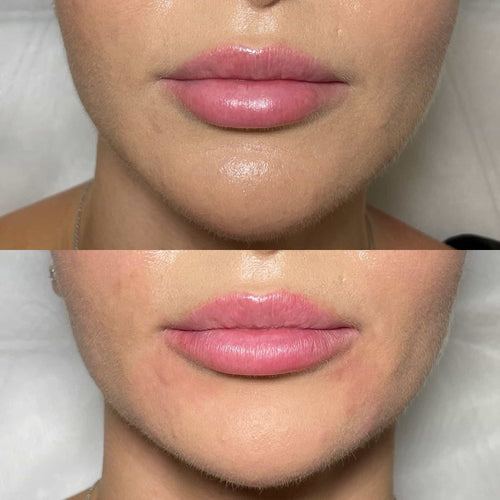Book a Dermal Filler Consultation with Dr. Laura Geige at It’s Me and You Clinic
Early 20s: A Time of Transition
Bone Growth & Facial Definition
The early twenties represent a period of significant transition for both physical appearance and overall development. While facial changes continue throughout life, the most dramatic transformations typically occur during adolescence and into the early twenties.
One key aspect of this developmental stage is *bone growth* that continues until around age 25. Facial bones are no exception, undergoing a process of lengthening, widening, and reshaping. The jawline becomes more defined, cheekbones become more prominent, and the nose may slightly change in size and shape.
Another crucial factor influencing facial changes in the early twenties is *facial muscle development*. As individuals mature, facial muscles strengthen and gain definition. This can result in a more sculpted appearance with more pronounced contours. The jawline becomes more angular, cheekbones become more prominent, and lips may appear fuller.
The effect of *hormonal fluctuations* during the early twenties also plays a role. While puberty hormones are still present, their levels stabilize, leading to gradual changes in facial features. Additionally, some individuals experience hormonal shifts related to stress, diet, or lifestyle, which can temporarily influence skin texture, fat distribution, and even jawline definition.
It’s important to note that individual experiences vary greatly. Genetics, ethnicity, and overall health contribute to the pace and extent of facial changes during this period. Some individuals may experience more noticeable transformations than others.
Skin Changes: Oil Production & Acne
The early 20s represent a pivotal period of transition marked by significant physical and hormonal changes. One of the most noticeable transformations occurs in the skin, particularly regarding oil production and acne development.
During adolescence, hormone levels surge, stimulating the sebaceous glands responsible for producing sebum, an oily substance that lubricates the skin and hair. As individuals enter their early 20s, these hormonal fluctuations often persist, leading to continued elevated sebum production. Excess sebum can clog pores, trapping dead skin cells and bacteria, ultimately resulting in acne breakouts.
Various factors contribute to oil production and acne susceptibility during this period. Genetics plays a role, as some individuals inherit a predisposition to oily skin and acne.
Stress also significantly influences hormone levels, potentially exacerbating sebum production and acne inflammation. Dietary choices, such as consuming high-glycemic foods or dairy products, can contribute to hormonal imbalances and worsen acne.
Furthermore, environmental factors like pollution and UV exposure can irritate the skin and trigger acne flare-ups.
It’s important to note that not everyone experiences significant skin changes in their early 20s. Individual variations in hormone levels, genetics, and lifestyle factors influence the extent of oil production and acne development.
Managing skin health during this period involves adopting a consistent skincare regimen. Cleansing twice daily with a gentle cleanser removes excess sebum and impurities. Using non-comedogenic (non-pore-clogging) products is essential to prevent further clogging. A moisturizer suitable for oily skin can help balance hydration without adding excess oil.

Exfoliating 1-2 times per week removes dead skin cells, promoting cell turnover and unclogging pores. Sunscreen with an SPF of 30 or higher protects the skin from damaging UV rays, which can worsen acne.
Arrange a Dermal Filler Consultation at It’s Me and You Clinic with Dr. Laura Geige
Mid-30s to Early 40s: The Collagen Decline
Loss of Volume and Fat Redistribution
The mid-30s to early 40s mark a significant transition in facial aesthetics. This period witnesses a noticeable decline in collagen production, leading to the loss of skin elasticity and volume.
Collagen, a structural protein, provides the skin with its firmness and youthful plumpness. As we age, our bodies naturally produce less collagen. This decline accelerates in the mid-30s, becoming more pronounced as we enter our 40s.
The loss of collagen contributes to the formation of fine lines and wrinkles, particularly around the eyes, mouth, and forehead. The skin loses its ability to bounce back effectively, resulting in a less youthful appearance.
Alongside collagen depletion, fat redistribution also plays a role in facial changes during this age range. Fat cells naturally migrate over time, causing a hollowing of the cheeks and temples. This can make the face appear thinner and more gaunt.
The lower jawline may also become less defined as fat accumulates around the neck, creating a double chin effect. These changes in fat distribution contribute to a sagging appearance and loss of facial contour.
The combination of collagen decline and fat redistribution results in a noticeable transformation in facial features during this period. The face may appear thinner, more angular, and less youthful compared to earlier years.
Deep Wrinkles Begin to Emerge
From your mid-30s to early 40s, a noticeable shift occurs in your skin’s structure and appearance, primarily due to a significant decline in collagen production.
Collagen is a protein that acts like a scaffolding, providing strength and elasticity to the skin. As we age, our bodies naturally produce less collagen, leading to several visible changes:
* **Deep Wrinkles Emerge:** Fine lines, present since your 20s, deepen and become more prominent. The loss of collagen support allows these lines to etch themselves more firmly into the skin.
* **Loss of Facial Volume:** Collagen contributes to the fullness and plumpness of the face. Its decline leads to a gradual loss of volume, causing the cheeks to appear hollowed, jowls to sag, and the jawline to soften.
Other Contributing Factors:
-
Sun Exposure: UV radiation damages collagen fibers, accelerating the aging process.
-
Genetics: Some people are genetically predisposed to producing less collagen than others.
-
Lifestyle Choices: Smoking, poor diet, and lack of sleep can all contribute to collagen breakdown.
Beyond 40: Embracing the Evolution
Sun Damage and Pigmentation
Beyond 40, our faces undergo a fascinating transformation marked by both visible changes and deeper underlying shifts. It’s not simply about aging; it’s an evolution, a natural progression where our bodies express their accumulated wisdom and experiences.
One of the most noticeable changes is the **sun damage** that becomes increasingly evident. Years of sun exposure accumulate in the form of fine lines, wrinkles, uneven pigmentation, and leathery texture. UV rays break down collagen and elastin fibers, the proteins responsible for skin’s firmness and elasticity, leading to sagging and loss of volume.
Pigmentation also undergoes significant changes. Melanin, the pigment responsible for skin color, becomes more concentrated in some areas due to sun exposure, hormonal fluctuations, or age-related changes. This often manifests as age spots (also known as liver spots), freckles, and an uneven skin tone.
As we age, our bodies produce less hyaluronic acid, a natural moisturizer that plumps the skin. This depletion contributes to thinning skin, making fine lines and wrinkles more prominent. Facial muscles also lose their strength and elasticity, leading to drooping cheeks, jowls, and changes in facial contours.
Beyond these visible changes, hormonal shifts play a significant role in skin aging. Estrogen decline, a natural part of the aging process, accelerates collagen breakdown and contributes to thinner skin, dryness, and increased pigmentation.
While these changes are inevitable, understanding them empowers us to take proactive steps to mitigate their impact. Sun protection is paramount. Using broad-spectrum sunscreen daily, wearing protective clothing, and seeking shade can significantly reduce the risk of sun damage.
Adopting a healthy lifestyle that includes a balanced diet, adequate hydration, and regular exercise also supports skin health. Topical skincare products containing antioxidants, retinol, hyaluronic acid, and peptides can help improve skin tone, texture, and elasticity.
Skin Thinning and Sagging
Beyond forty, the face begins a significant transformation driven by natural physiological changes. While aging is a universal experience, its visible effects on the skin become increasingly pronounced in this decade. Collagen and elastin, the proteins responsible for skin’s firmness and elasticity, naturally decline with age. This decline leads to thinning and sagging of the skin, resulting in a loss of facial contours and the appearance of wrinkles.
Schedule a Dermal Filler Appointment with Dr. Laura Geige Now

The depletion of collagen fibers causes the skin to lose its ability to bounce back after stretching. As a result, fine lines and wrinkles become more prominent, especially around the eyes, forehead, and mouth, areas frequently exposed to repetitive facial expressions. Elastin fibers, which provide structural support to the skin, also diminish, allowing the skin to stretch and sag more easily.
Facial fat pads, which contribute to volume and plumpness, begin to shrink as we age. This loss of fat can lead to hollowing in areas such as the cheeks, temples, and under-eyes, further accentuating the effects of skin thinning and sagging. Muscle mass also gradually decreases with age, contributing to a less defined jawline and a drooping appearance.
Beyond these structural changes, hormonal shifts that occur around menopause can accelerate skin aging. Decreases in estrogen levels can lead to thinner, drier skin with reduced collagen production. This hormonal influence further exacerbates the visible signs of aging on the face.
Understanding these physiological processes behind skin thinning and sagging empowers individuals to make informed decisions about skincare routines and lifestyle choices. While genetics play a role, adopting healthy habits like sun protection, a balanced diet, and adequate hydration can help mitigate these changes and promote healthy aging.
My Better Love Cycle for Azaylia Alkhemist LA On the Carpet Line the Studio
- Why Does Lip Filler Migration Happen - November 4, 2025
- What Is The Best Time Of Year To Get Bum Filler Injections? - November 3, 2025
- What Are The Best CBD Gummies For Sleep And Pain Relief - November 1, 2025
